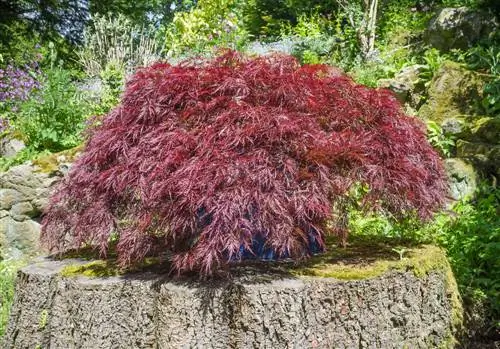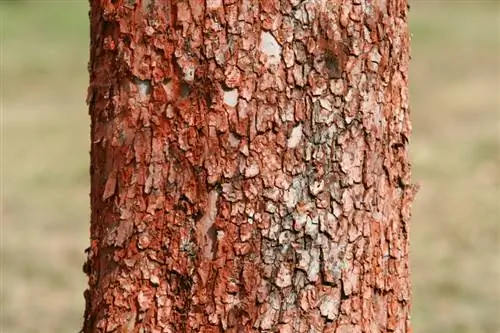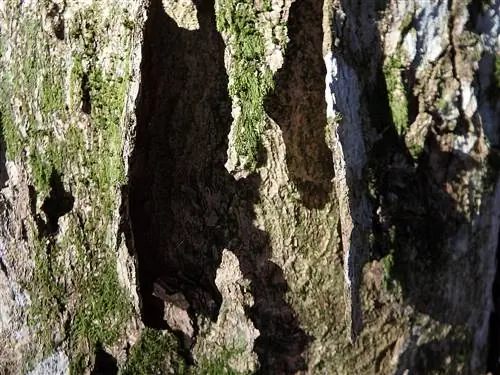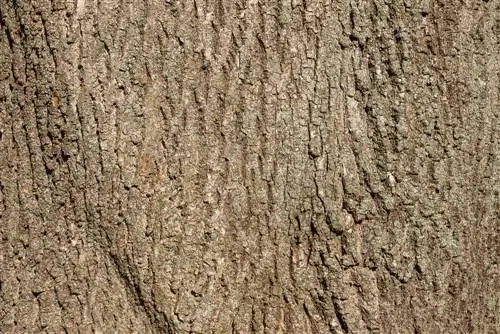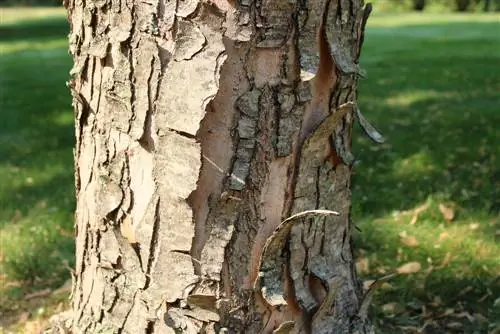- Author admin [email protected].
- Public 2023-12-16 16:46.
- Last modified 2025-06-01 06:02.
Fan maple Sangokaku (Acer palmatum) pulls out all the stops to impressively present itself. The coral-red bark is its most beautiful decoration. Green leaves with a delicate red border, paired with a tightly upright silhouette, complete the decorative appearance. Anyone who suspects demanding care behind the capricious appearance will be proven wrong here.
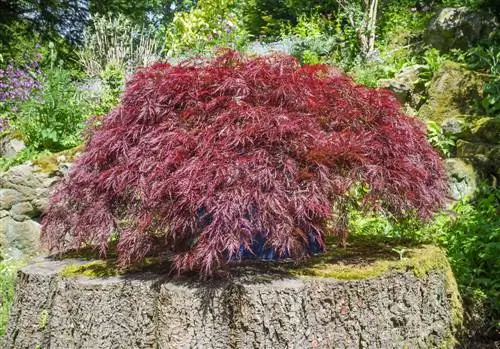
What's special about red-barked maple?
The Japanese maple Sangokaku (Acer palmatum) is characterized by its coral-red bark, green leaves with a delicate red border and a tight silhouette. It is easy to care for, prefers wind-protected locations, slightly acidic substrate and requires winter protection.
Perfect in the pot - beautiful in the bed - tips for choosing a location
With a growth height and width of 200 to 300 cm, Japanese Japanese maple with red bark is at its best in a pot. If you choose a pot size of 7.5 to 10 liters, this volume is ideal for the shallow-rooted plant. In contrast to its European counterparts, Sangokaku favors a slightly acidic substrate with a pH value of 5.0 to 6.5. The following site conditions are recommended:
- Most important criterion: a location protected from the wind so that the leaves do not brown in summer
- Sunny to partially shaded location without the risk of summer heat
- Humid, loose and well-drained soil
Like all Asian maples, the premium variety Sangokaku is sensitive to frost as a young plant, so spring is the best time to plant.
Modest care requirements - important aspects in brief
In the right location, the work required for a red-barked maple is reduced to a minimum. The simple care program in quick succession:
- Keep substrate or bed soil constantly slightly moist
- Fertilize liquid monthly in the pot from March to August
- Apply leaf compost and horn shavings to the bed in spring or autumn
- Cut only if necessary in spring shortly before budding
Winter protection is very important in the care program for a Japanese maple Sangokaku. Buckets receive a winter coat made of bubble wrap (€34.00 on Amazon), coconut or garden fleece. A wooden base protects the root ball from frost from below. In the bed, a thick layer of bark mulch takes on this function. A hood made of breathable fleece protects the red branches from cold wind and blazing winter sun in the first few years in the bed and pot.
Tip
If the bark turns red in autumn, the maple is suffering from fungal attack. A typical symptom of red pustule fungus disease is vermilion-red fruiting bodies that only emerge at the end of the season. The pathogens are resistant to fungicides. Cutting back to he althy wood in September is so far the only known countermeasure with a chance of success.

